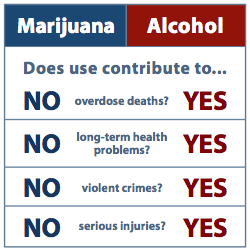Ray Hino, the warm-spirited, highly accomplished new CEO of the soon-to-open Sonoma West Medical Center (SWMC), seems to relish his new role as tour guide. Every Saturday for the past few months Hino, with his signature welcoming smile, light blue suit and tie, has graciously guided area residents through the innovative steps and spaces that will make Sonoma County’s only “no-wait emergency room” possible.
The tour begins in the renovated emergency room area. Visitors see a hospital waiting room that has been transformed into a staging area where patients will be seen almost immediately by a qualified medical professional. Hino next leads them through the hallway into some of the most thoughtfully designed patient recovery rooms ever seen in California.
“Our goal at the SWMC,” Hino explains, “is to perfect the patient-centric experience. Our goal is to have an average wait time of 5 minutes from door to bed, and in most cases, if possible, immediate bedding.”
The “patient-centric” experience is the key to what’s different, new, and exciting about Palm Drive. This approach of humanistic, quality local treatment is a welcome alternative to the institutional large city hospitals affiliated with multi-billion dollar bottom line-focused conglomerates (even non-profit ones) like the Kaiser and Sutter hospitals in Santa Rosa.
In an era in which health care is driven to consolidation for “greater efficiencies,” many consumers of health care are feeling that these “efficiencies” are diminishing care and reducing human beings into depersonalized numbers. Because our system has never evolved into a Medicare-for-All insurance system that will let us choose our doctors, we have been driven to ever larger private insurance conglomerates that actually limit our choice of doctors—especially local ones.
“Small hospitals can be much better at personalized, high quality care close to home,” says Dan Smith, board chair and lead philanthropist of the SWMC. “Having close-by emergency care makes all the difference in the world when you have a life-threatening illness. It’s not just how close the hospital is; it’s how close the doctor is. If you go to a hospital and wait 4 hours and you have a heart condition, that’s not a good situation. You really need to be able to see a specialist immediately. The fact that you’re in a small hospital can mean you’re getting better care. It’s very personal, people pay a lot of attention to you, and you have more access to physicians.”
Given the desire to “go local” for humanistic care, and the fact that the new SWMC will reopen with many of the same doctors who made Palm Drive the safest of more than 300 hospitals in the State of California (as rated by Consumer Reports), adding a no-wait emergency room and new patient-centric services make the reopening of the hospital the most important and exciting event in West County medical history.
“I believe the new hospital will be successful,” says John Moise, a health care consultant who has held executive positions within California’s Health and Human Services Agency for 10 years. “Doing what it takes to become the hospital of choicemakes the hospital much more desirable than before. Sonoma West Medical Center will be offering excellent medical and nursing care in a high quality personalized environment. Most of the people I know in Sonoma County prefer a smaller more personalized experience when the quality is equal to are higher than other alternatives.”
“The North Bay’s patient-centric hospital of choice” might serve as the tagline for the Sonoma West Medical Center. Ray Hino observes that the SWMC is putting its money where its mouth is. “The premier in-hospital bed experience is going to include a private room with an exterior view,” Hino explains. “Most of our rooms have a view of a beautiful courtyard setting. In that private room there will be room for a guest chair. The guest chair can be folded out into a bed that guests will be able to sleep in, to allow them to be a comfort and a part of the healing process.”
In addition, Hino notes, guests will have a personalized mini iPad at their bedside, to be used not only for charting by the medical team, but also for Skyping with family members. Or even watching movies from Netflix.
The dozens of hard working doctors, medical professionals and planners behind the SWMC have spent the past year thinking hard about what to keep from the Palm Drive tradition, and what needed improvement. The famous “pink ladies,” who have sadly been sidelined for a year, will certainly be back. They are retired local women who volunteer to connect with patients, on a personal and human level, during their time at the hospital. They will be augmented by new “patient navigator” personnel. These are trained professionals who will personally assist every patient through the complicated labyrinth of insurance billing and follow up care. Imagine such a helper presenting his or her card to you or a family member soon after arriving, with an email and phone number, saying, “Call me directly at this number so I can help you when you receive the bill.”

Then there’s the food. The SWMC has hired Rob Hogencamp, the former lead chef of the CERES project, to run a cafeteria and restaurant that will offer patients and their guests organic, nutritious food from a menu carefully focused on health.
Says Hino, “We intend to have the finest menu available with choices that are not normally found in a hospital setting and the opportunity for guests to be able to have a glass of wine if they choose. That’s what patient-centric means to us. It will be a complete experience unlike any that you will find in any other hospital in our region, if not the entire state.”
The Sonoma West Medical center plans to open at the end of May. For most area residents who for the past year have had to go to Santa Rosa’s large city hospital emergency rooms, it will be a huge relief. “I’ve lived here for over 40 years, and for me, this is great,” said 88 year Rosie Bratton, a widow (and the neighbor of this reporter). Like thousands of seniors in the West County area, Bratton’s inconvenience and worry over accessing health care has increased significantly since Palm Drive closed. Recently, what had once been a simple request to a neighbor to drive five minutes and drop her off with the helpful “pink ladies” at Palm Drive Hopsital has become a major ordeal. Bratton recently needed to be driven more than 20 minutes to Kaiser, wait hours to be seen, then brought home to Sebastopol. It took her a half hour to find someone to help her: an 80-something retired friend who was able to commit the four hours that the trip and wait took for her.
Rosy Bratton is relieved, and delighted that the Sonoma West Medical Center is reopening West County’s small hospital. She says, “I’m excited because there will be an emergency room again!”



































